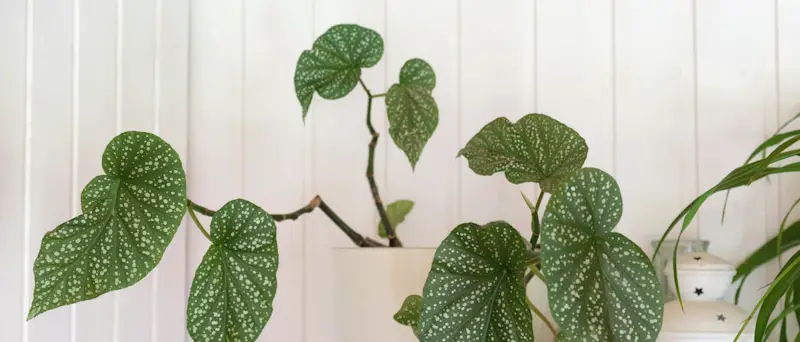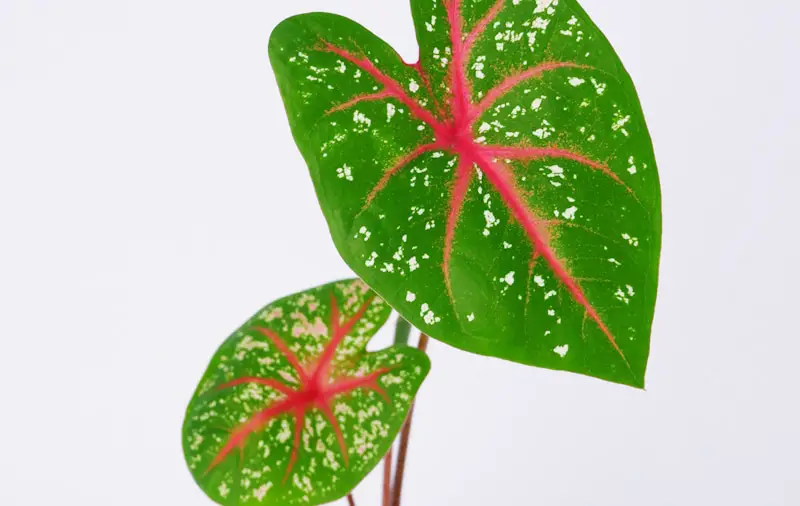Every fan of eagle plants is concerned about the challenging nature of caring for angel plants. An assortment of hues and shapes may be found in Exotic Angel Plants, a hybrid foliage plant. These plants are cultivated in greenhouses and were specifically developed to be marketed as houseplants. Here, general care guidelines are provided for them. Your Angel may have somewhat different requirements for water and light.
Some primary care tips for Exotic Angel plants include checking and balance on soil conditions, the amount of light plants are exposed to, the suitable temperature and humidity for survival and growth, utilization of fertilizers, watering pattern, propagation, and potting.
All of the tropical Angel Plants were specifically bred to grow inside. Exotic Angels are well-liked because they are aesthetically pleasing and require little maintenance, much like blue cohosh plants. It should go without saying that caring for an Exotic Angel plant indoors is relatively easy. They may either be kept in pots or hung in a cascading fashion.

Exotic Angel Plant Types
Splash Splish
Masses of white blossoms with purple streaks and spots cover the leaves in early summer. Once established, this plant is drought tolerant and suitable for beds, borders, and containers. To promote fresh growth, old blooms should be taken out.
Splish Splash Cranesbill is suggested for the following landscape uses:
- Large-scale planting
- Borderline edging
- Planting in containers in the garden
Silver Wings
Silver Wings, mainly perennial evergreen bushes from Brazil, angel wing begonias may be grown indoor or outdoor in USDA regions 10 and 11. They are a kind of cane begonia with sturdy stems that have obvious joints and provide leaves and blossoms. These attractive shrubs are known for their gorgeous, asymmetrical leaves, which have the appearance of angel wings. These leaves frequently have a “polka dot” pattern of cream, silver, or white with a crimson or purple underside. These leaves have a maximum growth length of 6 inches.
Looking Glass
Begonia ‘Looking Glass’ is a magnificent hybrid of an angel-wing begonia with enormous, exquisite silver leaves with cranberry undersides and olive-green veins. This mixture of dazzling silver blends stunning elegance with a kind disposition.
The 60cm-tall Begonia “Looking Glass” blossoms from late winter through early spring. You must be mindful not to overwater begonias since they are susceptible to root rot. Additionally, while watering it, ensure the plant leaves are dry by drizzling water directly on the ground.
Care For Exotic Angel Plants: The Basics
Even if a plant has undergone physiological modification to become an indoor candidate, the owner should ensure that all demands are met.
Among these are the amount of light they must be subjected to, water saturation, pruning, and other essential requirements.
Soil For Exotic Angel Plant Care
The vast majority of the families covered by this brand need moist but not saturated soil. These plants could develop root rot if submerged in water for long periods. The best options are peat moss-based soils that drain well and have a high organic content. It is advised to research the particular species you have if you have any doubts about the accuracy of the soil.
Light For Exotic Angel Plant Care
Exotic Angel plants require indirect light in general. But don’t be duped by this. They do need sunlight to generate such vivid flowers. Although certain types of Exotic Angel enjoy direct sunlight, the entire group finds that moderate sunlight is the perfect compromise.
Watering For Exotic Angel Plants
Whatever variety you have, Exotic Angels respond best when given little quantities of water. This might alter depending on a variety of variables. First-time watered plants need more water than mature plants and must be watered two times or three times each week. Once an Exotic Angel reaches maturity, it often needs weekly watering sessions. If it’s hot where you live, think about checking the soil for dryness.
Temperature For Exotic Angel Plant Care
Maintaining a temperature indoors between 16 to 21 degrees Celsius is quite simple. When the outside temperature falls too suddenly, or there is an unexpected drought, this is when they have the most problems. The leaves will turn yellow if the temperature drops below 10 degrees Celsius. It would be best to be cautious in situations like intense heat or when the air becomes too dry. Additionally, this can negatively affect your flora.
Humidity
Exotic Angel plants are native to the tropics, so it makes sense that they like a humid climate to thrive in. Inside, the relative humidity hovers at about 50%. This is the perfect level for the majority of Exotic Angel plants. Watch the leaves since certain varieties can require more. You might want to hold off on adding more moisture if you notice that they are starting to dry up.
Fertilizer For Exotic Angel Plant Care
Fertilizer addition is a challenging process. While some plants don’t require it, some do produce beautiful flowers. Exotic Angel plants can lack nitrogen, phosphate, and potassium, although they don’t necessarily need them.
A monthly application of water-soluble fertilizer could be helpful. Be careful to begin this feeding regimen if you notice active growth and do so immediately following watering. Please do your research first since certain species, like Dragon plants, are much more precise about the fertilizers they require.
Propagation
There are numerous ways to propagate exotic angel plants; however, water propagation and stem cuttings are the two most popular ones. Researching the most effective propagation methods for your species of exotic plants is highly suggested. Depending on your knowledge and expertise, it could be challenging to grow a new angel plant from the parent plant.
Growth
Since exotic angel plants are known for their small stature, most indoor plant enthusiasts will find them a great selection. However, the biggest individuals, like Pothos and Snake plants, are not all equally little. These species are on the taller side for houseplants, growing up to 8 inches in height. Fortunately, if that’s what you want, you may choose a smaller plant.
Potting
Moving a flora to a bigger pot using the conventional method takes less time than moving an Exotic Angel plant. However, since these indoor plants are more delicate, the introduction should be done gradually. If you notice that the leaves and roots are getting crowded, put in a new pot that is just a few inches wider.

How To Revive An Exotic Angel Plant
Frost may damage exotic angel plants. They have to be kept in an environment that is warm and well-lit. In the summer, it needs around 8 hours each day of direct sunlight. In the winter, they require 6 hours every night of direct sunlight. These plants thrive in natural bright light. They hate being alone in the dark. You might want to move your plant to a slightly warmer location if you live in a cold environment.
These six steps should be followed to save your plant.
- Plant it in a new container or pot.
- You should trim your plant.
- If there is damage to the roots, cut the leaves back.
- You must relocate your plant.
- You should water your plant.
- Ensure that your plant is receiving adequate nutrients.
Conclusion
No matter how unique, Angel plants require the same ongoing maintenance as other plants of the same kind. Despite the lack of branding, pothos is still pothos. Regardless of the grower, the plant’s demands and how to care for an angel plant are the same.
Although the exotic angel plants don’t take much care, if you follow the basic requirements for your chosen species, your plant will be healthy and have attractive leaves. The exotic angel plant does best in a location with lots of sunshine. Don’t expose the plant to the sun for an extended period. Use a mist spray bottle loaded with water to regularly sprinkle the plant with some water.
Victoria is the owner and main author of hobby plants. She loves spending her free time in her garden planting and taking care of her plants. Victoria hopes you enjoy the content here!
![Majesty Palm Plant Care: [Complete Beginner's Guide] Majesty Palm Plant Care: [Complete Beginner's Guide]](https://www.hobbyplants.com/wp-content/uploads/2022/08/majesty-palm-care-300x158.jpg)
![Waffle Plant Care: [Complete Beginner's Guide] Waffle Plant Care: [Complete Beginner's Guide]](https://www.hobbyplants.com/wp-content/uploads/2022/08/waffle-plant-300x158.jpg)
![Bird Of Paradise Plant Care: [Complete Beginner's Guide] Bird Of Paradise Plant Care: [Complete Beginner's Guide]](https://www.hobbyplants.com/wp-content/uploads/2022/08/bird-of-paradise-plant-300x158.jpg)
![Purple Passion Plant Care: [Complete Beginner's Guide] Purple Passion Plant Care: [Complete Beginner's Guide]](https://www.hobbyplants.com/wp-content/uploads/2022/08/purple-passion-plant-care-300x158.jpg)
![China Doll Plant Care: [Complete Beginner's Guide] China Doll Plant Care: [Complete Beginner's Guide]](https://www.hobbyplants.com/wp-content/uploads/2022/09/china-doll-plant-care-300x158.jpg)
![Polka Dot Plant Care: [Complete Beginner's Guide] Polka Dot Plant Care: [Complete Beginner's Guide]](https://www.hobbyplants.com/wp-content/uploads/2022/09/polka-dot-plant-300x158.jpg)
![Mona Lisa Lipstick Plant Care: [Complete Beginner's Guide] Mona Lisa Lipstick Plant Care: [Complete Beginner's Guide]](https://www.hobbyplants.com/wp-content/uploads/2022/09/lipstick-plant-mona-lisa-300x158.jpg)
![Yucca Cane Plant Care: [Complete Beginner's Guide] Yucca Cane Plant Care: [Complete Beginner's Guide]](https://www.hobbyplants.com/wp-content/uploads/2022/09/yucca-cane-plant-care-300x158.jpg)
![Bush On Fire Croton Plant Care: [Complete Beginner's Guide] Bush On Fire Croton Plant Care: [Complete Beginner's Guide]](https://www.hobbyplants.com/wp-content/uploads/2022/09/bush-on-fire-croton-300x158.jpg)
![Polka Dot Begonia Plant Care: [Complete Beginner's Guide] Polka Dot Begonia Plant Care: [Complete Beginner's Guide]](https://www.hobbyplants.com/wp-content/uploads/2022/09/polka-dot-begonia-care-300x158.jpg)
![Bleeding Heart Plant Varieties [COMPLETE BEGINNER'S GUIDE] Bleeding Heart Plant Varieties [COMPLETE BEGINNER'S GUIDE]](https://www.hobbyplants.com/wp-content/uploads/2022/07/bleeding-heart-plant-300x158.jpg)
![How To Propagate Prayer Plant? [COMPLETE BEGINNER'S GUIDE] How To Propagate Prayer Plant? [COMPLETE BEGINNER'S GUIDE]](https://www.hobbyplants.com/wp-content/uploads/2022/07/how-to-propagate-prayer-plant-300x158.jpg)